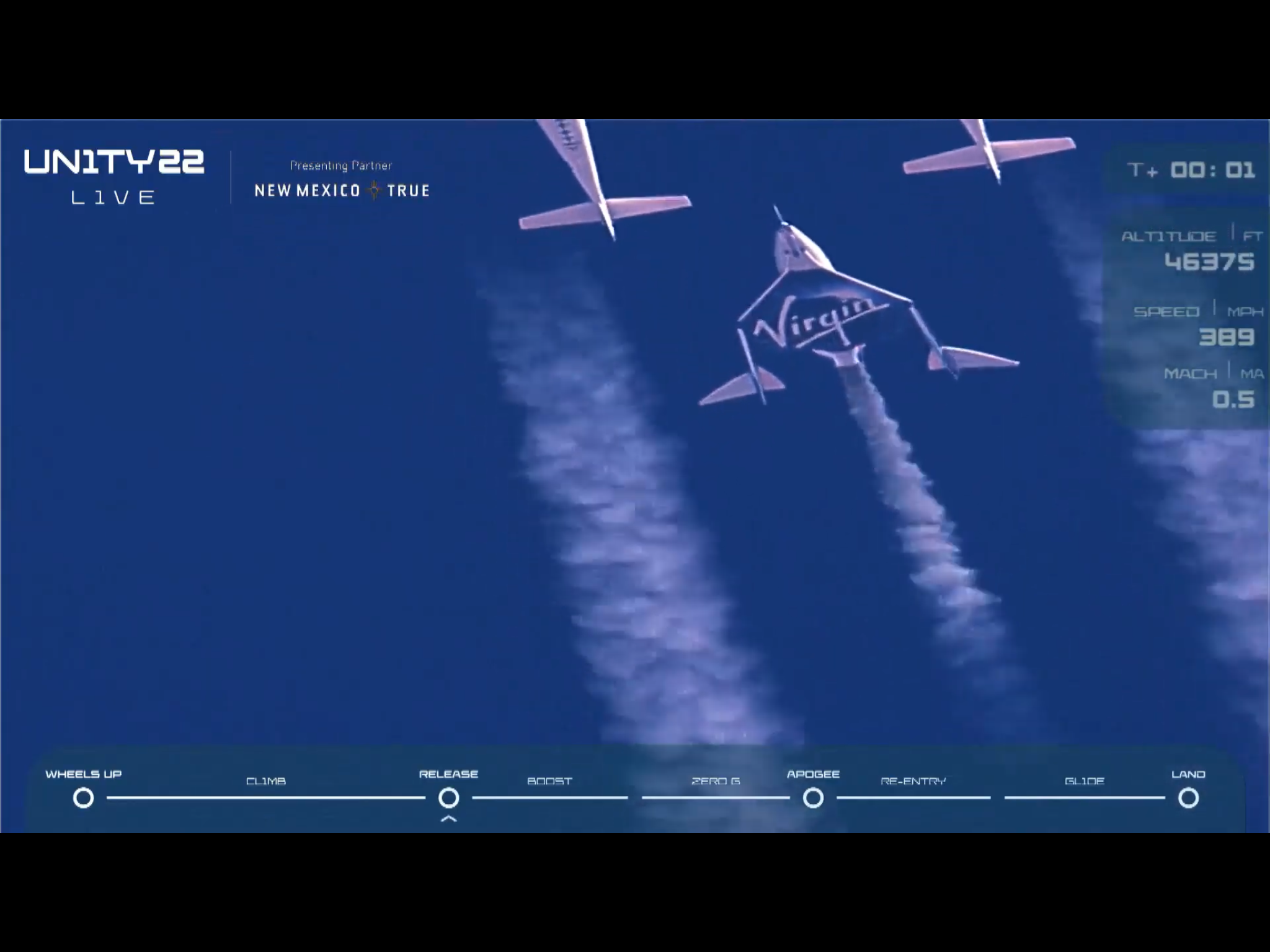
LAS CRUCES, New Mexico—Virgin Group founder Richard Branson, an early investor and ardent promoter of commercial spaceflight, joined five Virgin Galactic employees aboard the SpaceShipTwo Unity on July 11 for a suborbital ride 17 years in the making.
“I have dreamt of this moment since I was a kid,” Branson said after the flight. “Honestly, nothing can prepare for the view from space. It was just magical.”
Branson, 70, was joined by mission specialists Beth Moses, Colin Bennett and Sirisha Bandla and pilots Dave Mackay and Michael Masucci for the Unity-22 mission, a shakedown flight ahead of the start of commercial passenger service.
Branson and his crewmates walked out from Virgin Galactic’s headquarters at Spaceport America near here at 7:30 a.m. local time (9:30 a.m. EDT) and boarded Land Rover SUVs for a short drive to the runway where Unity and its WhiteKnightTwo carrier jet were being prepared for takeoff.
More than 350 guests, including SpaceX CEO Elon Musk, and 160 members of the media gathered at the spaceport to watch the flight, Unity’s fourth venture into suborbital space and its first with a full passenger load.
The WhiteKnightTwo mother ship, piloted by Frederick “C.J.” Sturckow and Kelly Latimer, taxied down the runway at 8:14 a.m. local time, heading north over the New Mexican desert. The carrier jet, named Eve after Branson’s mother, reached its target altitude of 46,000 ft. and released Unity at 9:20 a.m. Seconds later, Unity’s hybrid rocket motor ignited, catapulting the vehicle to a speed of Mach 3 and an altitude of 282,000 ft., or 53.4 mi.
At apogee, Branson and his crew unstrapped from their seats to enjoy a few minutes of weightlessness and the view of Earth set against the backdrop of space. Unity glided to a landing at 9:39 a.m. local time.
“This is a landmark moment for our company and for our founder, who is right now showing that if you have the fortitude to follow your dream, you can make a huge and profound impact on the world,” Virgin Galactic CEO Michael Colglazier said during a launch webcast, remotely hosted by TV personality Stephen Colbert.
“It’s a historic moment because today we are endeavoring to open access to space for all,” Colglazier said.
Branson licensed the technology for SpaceShipTwo in 2004 after the prototype SpaceShipOne completed the first of a pair of suborbital flights to clinch the $10 million Ansari X Prize for the first human spaceflights aboard a reusable, privately built vehicle.
SpaceShipOne was funded by the late Paul Allen and built by Burt Rutan and his team at Scaled Composites of Mojave, California. Scaled is now owned by Northrop Grumman. At the time, Branson expected Virgin Galactic to begin commercial flights in 2007.
Branson was due to fly on Unity’s next flight, following the full-cabin shakedown sortie, but moved up to the July 11 mission, nine days ahead of when Blue Origin founder Jeff Bezos is scheduled to fly on his company’s debut human mission.
Unity reached space for the first time on Dec. 13, 2018, with a maximum altitude of 271,684 ft.





